
Édouard Manet was a French modernist painter. He was one of the first 19th-century artists to paint modern life, as well as a pivotal figure in the transition from Realism to Impressionism.

Giovanni di Niccolò de Luteri, better known as Dosso Dossi, was an Italian Renaissance painter who belonged to the School of Ferrara, painting in a style mainly influenced by Venetian painting, in particular Giorgione and early Titian.

Hippolyte Bayard was a French photographer and pioneer in the history of photography. He invented his own process that produced direct positive paper prints in the camera and presented the world's first public exhibition of photographs on 24 June 1839. He claimed to have invented photography earlier than Louis-Jacques Mandé Daguerre in France and William Henry Fox Talbot in England, the men traditionally credited with its invention.
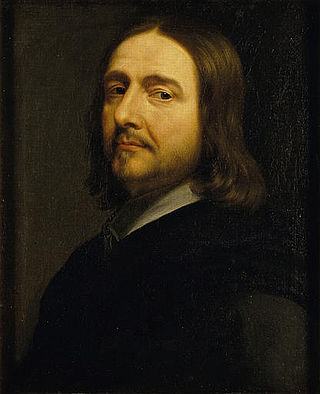
Philippe de Champaigne was a Brabançon-born French Baroque era painter, a major exponent of the French school. He was a founding member of the Académie royale de peinture et de sculpture in Paris, the premier art institution in the Kingdom of France in the eighteenth century.

Irises is one of several paintings of irises by the Dutch artist Vincent van Gogh, and one of a series of paintings he made at the Saint Paul-de-Mausole asylum in Saint-Rémy-de-Provence, France, in the last year before his death in 1890.

Gerard ter Borch, also known as Gerard Terburg, was a Dutch Golden Age painter mainly of genre subjects. He influenced his fellow Dutch painters Gabriel Metsu, Gerrit Dou, Eglon van der Neer and Johannes Vermeer. According to Arthur K. Wheelock Jr., Ter Borch "established a new framework for subject matter, taking people into the sanctum of the home", showing the figures' uncertainties and expertly hinting at their inner lives. His influence as a painter, however, was later surpassed by Vermeer.
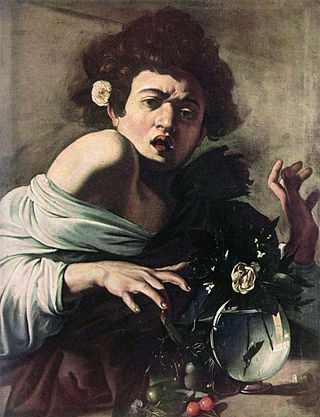
Boy Bitten by a Lizard is a painting by the Italian Baroque painter Caravaggio. It exists in two versions, both believed to be authentic works of Caravaggio, one in the Fondazione Roberto Longhi in Florence, the other in the National Gallery, London.

James Peale was an American painter, best known for his miniature and still life paintings, and a younger brother of noted painter Charles Willson Peale.

Joseph, Baron Ducreux was a French noble, portrait painter, pastelist, miniaturist, and engraver, who was a successful portraitist at the court of Louis XVI of France, and resumed his career at the conclusion of the French Revolution. He was made a baron and premier peintre de la reine, and drew the last portrait ever made of Louis XVI before the king's execution. His less formal portraits reflect his fascination with physiognomy and show an interest in expanding the range of facial expressions beyond those of conventional portraiture.
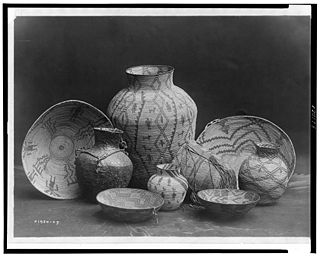
Still life photography is a genre of photography used for the depiction of inanimate subject matter, typically a small group of objects. Similar to still life painting, it is the application of photography to the still life artistic style. Tabletop photography, product photography, food photography, found object photography etc. are examples of still life photography.

Charles Bird King was an American portrait artist, best known for his portrayals of significant Native American leaders and tribesmen. His style incorporated Dutch influences, which can be seen most prominently in his still-life and portrait paintings. Although King's artwork was appreciated by many, it has also been criticized for its inaccurate depictions of Native American culture.

A fancy portrait is a portrait of a real or literary character that takes the form of a conventional portrait, but is defined by the fact that its depiction of the character is derived from the artist's imagination rather than any authentic record of the person's appearance. In J. and H. L. Hunt's translation of Dictionnaire philosophique, Voltaire describes the fancy portrait as "a portrait not taken from any model".

Alexander Dmitrievich Litovchenko was a Russian painter. He specialized in depicting Muscovite Russia of the 16th and 17th centuries.

Estelle Gettleman, known professionally as Estelle Getty, was an American actress and comedienne. She was best known for her portrayal of Sophia Petrillo on The Golden Girls (1985–92), for which she won a Golden Globe Award for Best Actress – Television Series Musical or Comedy and a Primetime Emmy Award for Outstanding Supporting Actress in a Comedy Series. She reprised the role for appearances on Empty Nest (1993–95), The Golden Palace (1992–93), Blossom (1990–95), and Nurses (1991–94). Notable films in which she appeared include Mask (1985), a semibiographical film in which she played the grandmother of Roy L. Dennis, Mannequin (1987), and Stuart Little (1999). She retired from acting in 2001 due to failing health, and died in 2008 from dementia with Lewy bodies.

Portrait of Madame Récamier is an 1800 portrait of the Parisian socialite Juliette Récamier by Jacques-Louis David showing her in the height of Neoclassical fashion, reclining on a Directoire style sofa in a simple Empire line dress with almost bare arms, and short hair "à la Titus." The work is unfinished.

Katherine Elizabeth Fleming is President and CEO of the J. Paul Getty Trust and the Alexander S. Onassis Professor of Hellenic Culture and Civilization in the Department of History at New York University (NYU) as well as Provost Emerita of the university. She was Provost of NYU from 2016 to 2022. She has been President and CEO of the J. Paul Getty Trust since August 1, 2022, an appointment with which she became "effectively...the most powerful woman in the US museum world." A profile in the French newsweekly Le Point dubbed her "the most powerful woman in the world of art," while Émilie Lanez of the French newspaper L'Express has called her "the most powerful woman in American culture." She was included in the Observer's 2023 Business of Art Power List. Since arriving at the Getty, she has shown an interest in new models for the ownership of art, a theme on which she has spoken publicly, and has moved to further Getty's commitments to the Southern California art community. The Getty's innovative joint acquisition of "Portrait of Mai (Omai)" by Sir Joshua Reynolds, which took place in Fleming's first year at the helm of the Getty, was announced as "Acquisition of the Year" for 2023 by Apollo Magazine.
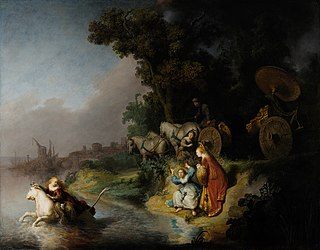
Rembrandt Harmenszoon van Rijn's The Abduction of Europa (1632) is one of his rare mythological subject paintings. The work is oil on a single oak panel and now located in the J. Paul Getty Museum. The inspiration for the painting is Ovid's Metamorphoses, part of which tells the tale of Zeus's seduction and capture of Europa. The painting shows a coastal scene with Europa being carried away in rough waters by a bull while her friends remain on shore with expressions of horror. Rembrandt combined his knowledge of classical literature with the interests of the patron in order to create this allegorical work. The use of an ancient myth to impart a contemporary thought and his portrayal of the scene using the High Baroque style are two strong aspects of the work.
Cornelius Jabez Hughes was a British photographer, daguerreotypist, and writer. He was one of the best known portrait photographers in Victorian England, and today his photographs are included in a number of notable museum collections including the National Portrait Gallery in London and The J. Paul Getty Museum in Los Angeles.
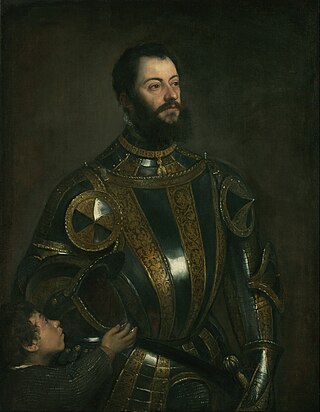
Portrait of Alfonso d'Avalos with a Page is a 1533 portrait by Titian of Alfonso d'Avalos, a general in the service of Charles V, Holy Roman Emperor. It has been in the Getty Museum in Los Angeles since 2004. After Venus and Adonis (1555–1560) and Penitent Magdalene (1555–1561), it was the third Titian work to enter the Getty collection.
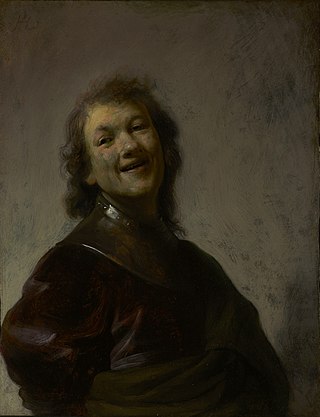
Rembrandt Laughing is a c. 1628 oil on copper painting by the Dutch painter Rembrandt van Rijn. It is an elaborate study of a laughing face, a tronie, and, since it represents the painter himself, one of over 40 self-portraits by Rembrandt, probably the earliest elaborate one. The painting, which was only recently discovered, is now in the J. Paul Getty Museum, California.


















